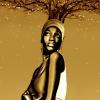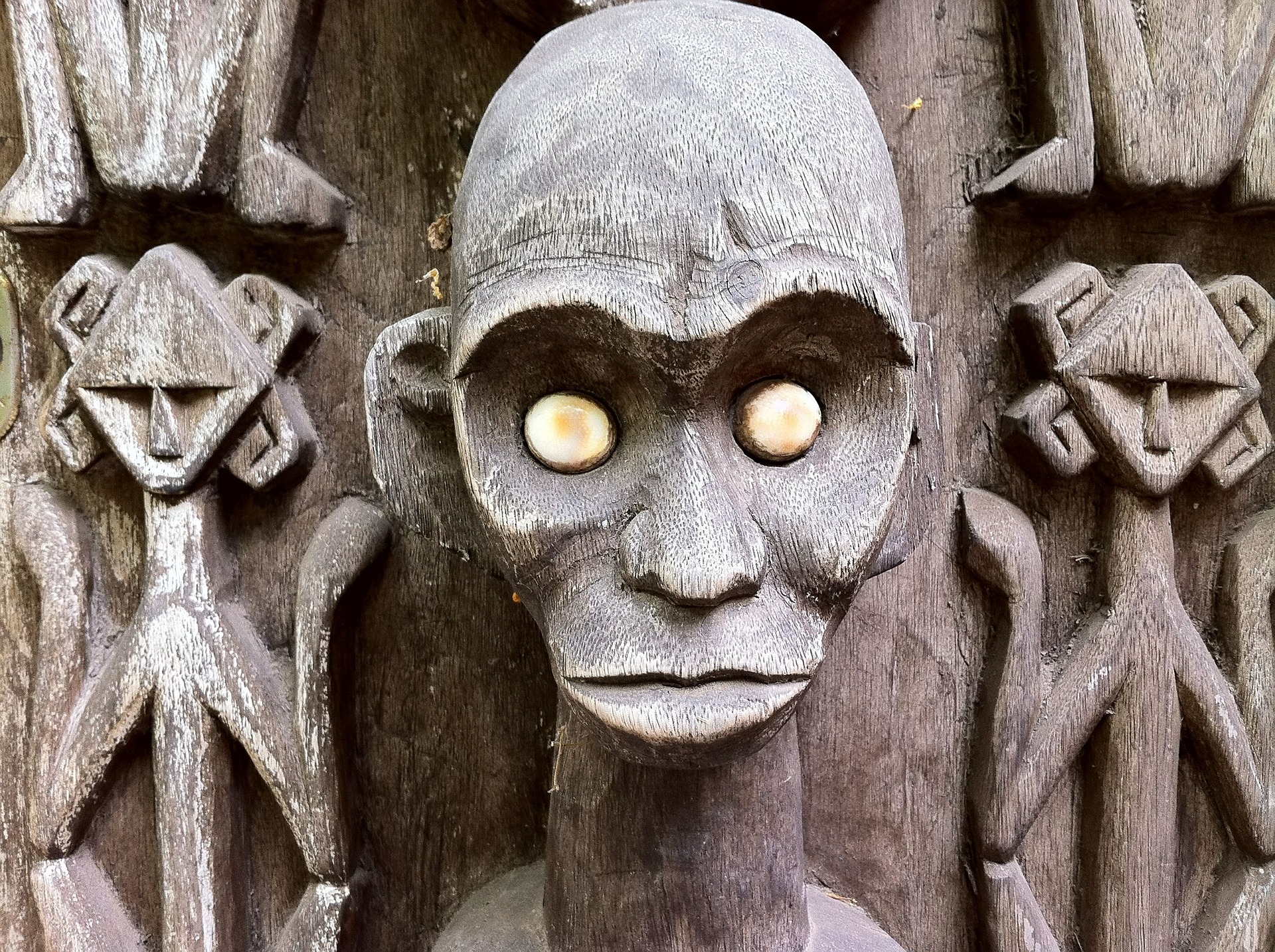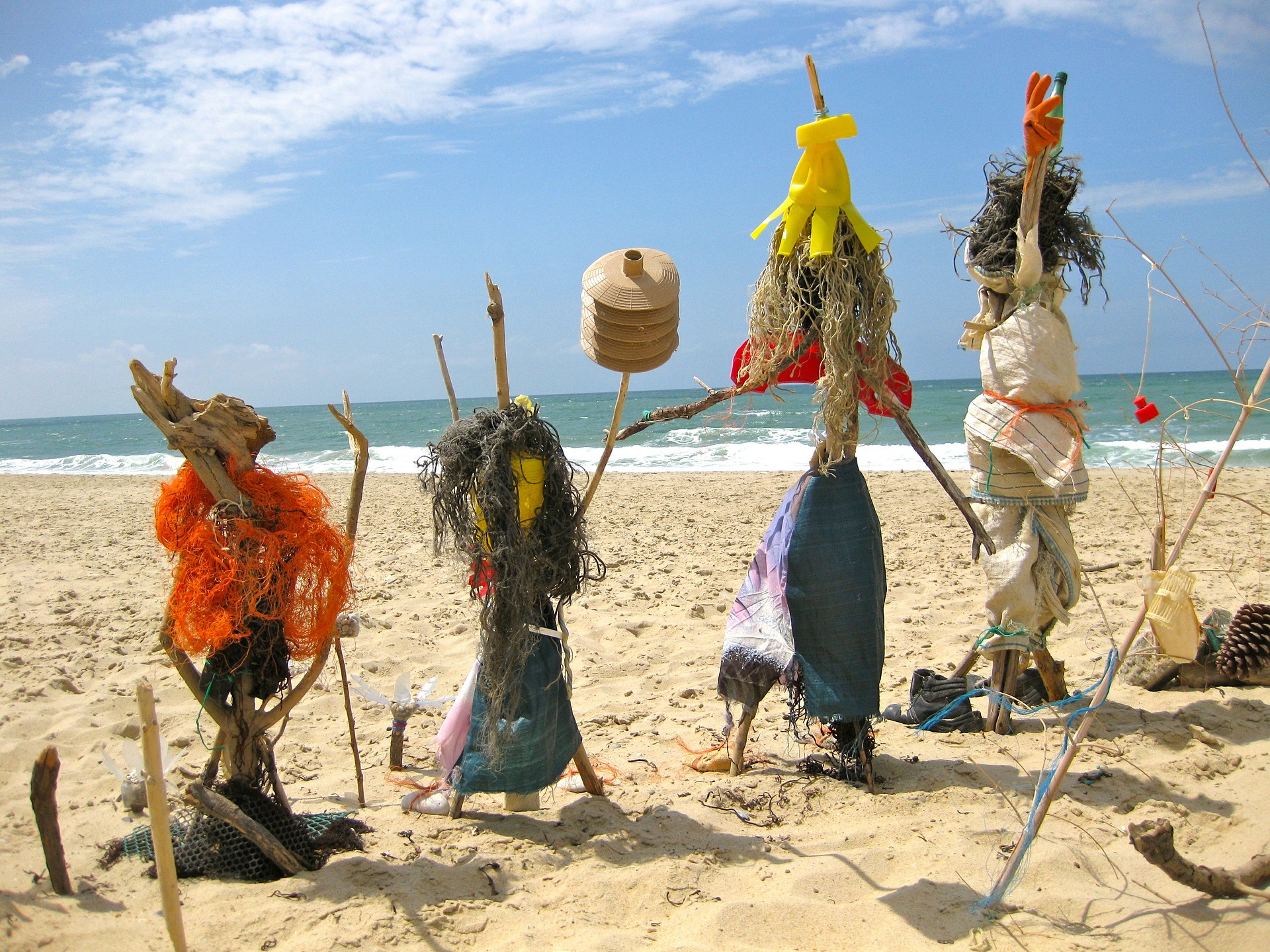 Submitted by Sister Telma on
Submitted by Sister Telma on

Voudo more readily recognized as Voodoo, is an African rooted religion. Its context varies from place to place and often includes other facets such as Catholic and American Indigenous traditions. It has no overruling body but is rather a community support system conducted to buoy individual experience and empowerment. It is also a survival focused belief system emphasizing healing and social accord with an ethical focus on combating greed and promoting honor. Types include Louisiana Voodoo (or New Orleans Voodoo), Haitian Vodou, Brazilian Vodum, West African Vodum, Cuban Vodú and Dominican Vudú. Despite the bad hype surrounding Voudo, it is a legal religion with very old roots.
Voudo is ancestor oriented so to the voudoist the transition from life to death simply means that those who have passed over from the visible world to the invisible world are still with us. In spirit form the ancestors are thought of as guardians and protectors who can inspire the living. In addition to ancestors there are also other supernatural beings known as Lwa or Loa with whom a practitioner will strike a relationship in order to get advice and counsel to assist with problems in the mundane world. Depending upon locale the personality of the Lwa will vary accordingly to the needs of the area. For example, the Yoruba ‘Ogun’ will carry the archetype of ‘warrior’ so a practitioner will adopt the warrior energy in order to get messages. Papa Legba is a popular and important Lwa as he is considered the gatekeeper between the worlds of the mortal and the Divine (similar to St. Peter at the Gates of Heaven). The Lwa are depended upon because the Supreme Being known as Bondye is considered unknowable and uninvolved by nature.
Like other religions, Voudo has an ordained clergy which includes both men known as Hougan (Doctor) and women known as Mambo (Queen). The community thinks of them as responsible people who can offer good advice. On a higher spiritual level, it is believed that they can also be capable of self-actualization which means they can reach full potential through creativity, independence, spontaneity, and a grasp of the real world. Priests and Priestesses undergo long and serious training since some ritual includes possession of a Lwa. The ti bon ange (little good angel) is the container for the spirit of priest or priestess which protects it while the Lwa message is being revealed. The gros bon ange (great good angel) is considered the spirit that is shared with the living.
In general Voudo has been misunderstood throughout history starting with the racism connected to slavery. Voodoo came to the Americas a little over 250 years ago with the raids on the African Slave Coast began about 1720. It originated in the West Indies country of Haiti during the French Colonial Period.
In early America, when the country was undergoing much growth upheaval and political and social evolution, slaves were always held ‘suspect’ and what first was passed off as mere ‘superstition’ could end up with dire circumstances for followers and practitioners. Clergy was referred to as ‘witchdoctors’ and all practices deemed evil and sinful. In other places like Haiti, Voudo was successful and to this day is still highly involved in the culture and in politics. The success of Voudo in Haiti caused consternation in America and with European rulers who relied on slavery to make their enterprises successful so to denigrate it to the point of instilling fear in the populace served their purposes.
Most of the dire imagery connected to Voudo is courtesy of Hollywood and the media which took it to levels of debauchery and evil and only used to hurt others. In reality, even Pope John Paul II spoke of Voudo in the context of its fundamental goodness. He attended a Voudo ceremony in 1993. The intention behind Voudo is no different than the intention behind any other act. It depends upon the frame of mind behind the person who is wielding the energy.
Voudo dolls, snakes, magic and animal sacrifices also have much hype surrounding them. Good or bad (white or black) magic holds no distinction in Voudo. Anything to do with the conjuring of evil is known as red magic. An evil Lwa possessing an individual who has conjured it will often display red eyes. It is the job of the Hougan and Mambo to stop any of this before it even happens. A Voudo doll in itself is neither a good or evil object. Its uses are complicated but for the most part benevolent. Items attached to the doll via pins are meant as an appeal to the spirits to bring good to the individual. In movies, pins are often shown to bring pain and distress to a ‘victim’ when in actuality that is not why they are used. The snake is a representative of the Damballa or Danballa a god of the Voudo pantheon. It represents old wisdom and not evil. The concept behind animal sacrifice such as the slaying of a chicken is meant as a way of combining the life force of the animal with the life force of the Lwa. It is not all blood and guts as Hollywood would have you believe. What most people do not know is that animal is cooked and consumed as part of the ritual. While this may still be offensive to some it needs to be put into the proper context away from the preconceived notion of evil.
Like other religions, Voudo has public ceremonies and fetes and well as private rituals.
MANJE YANM is a harvest celebration. It has no fixed date and depends upon the harvesting of yams.
FETE FOR A LWA is celebration to serve the Lwas and call upon them to help the community.
PRIVATE RITUALS include divinations and readings, spiritual baths to help the individual reach a goal or remove negativity, wanga which has multi uses for such requests as love, money, work or even revenge (against an evil perpetrator), Anvwa Mo used to send away enemies, Pwen Cho used to acquire a working spirit (this ritual is not practiced by all practitioners since it is considered dangerous), Mariaj Lwa – a marriage ceremony where an individual is married to a Lwa and takes on obligation to that Lwa, Lave Tet which is a head washing to increase psychic ability and magical power, Kanzo which is an initiation ceremony. It belongs to Haitian Vodou Tradition of the Asson lineage where secrets of the lineage are taught.
If science ever gets to the bottom of Voodoo in Haiti and Africa, it will be found that some important medical secrets, still unknown to medical science, give it its power, rather than the gestures of ceremony. – Zora Neale Hurston

- 1829 reads